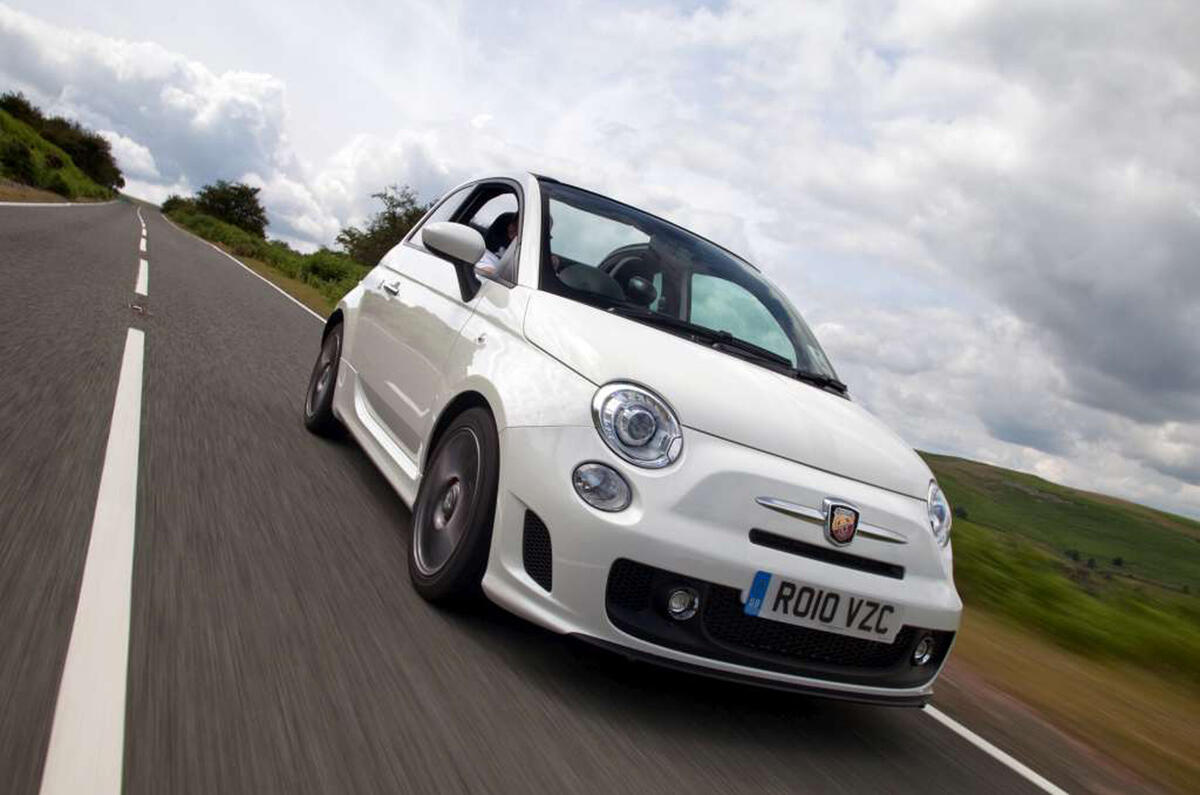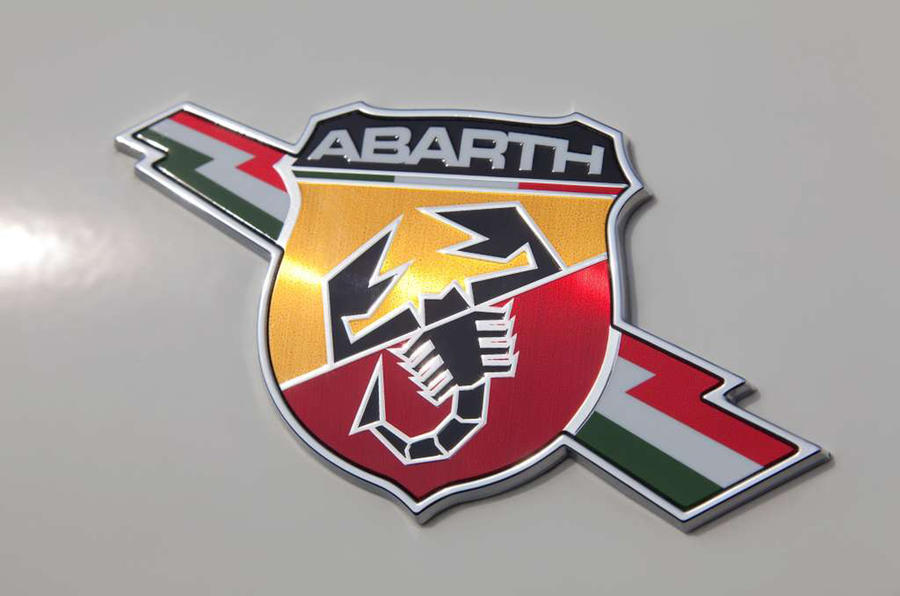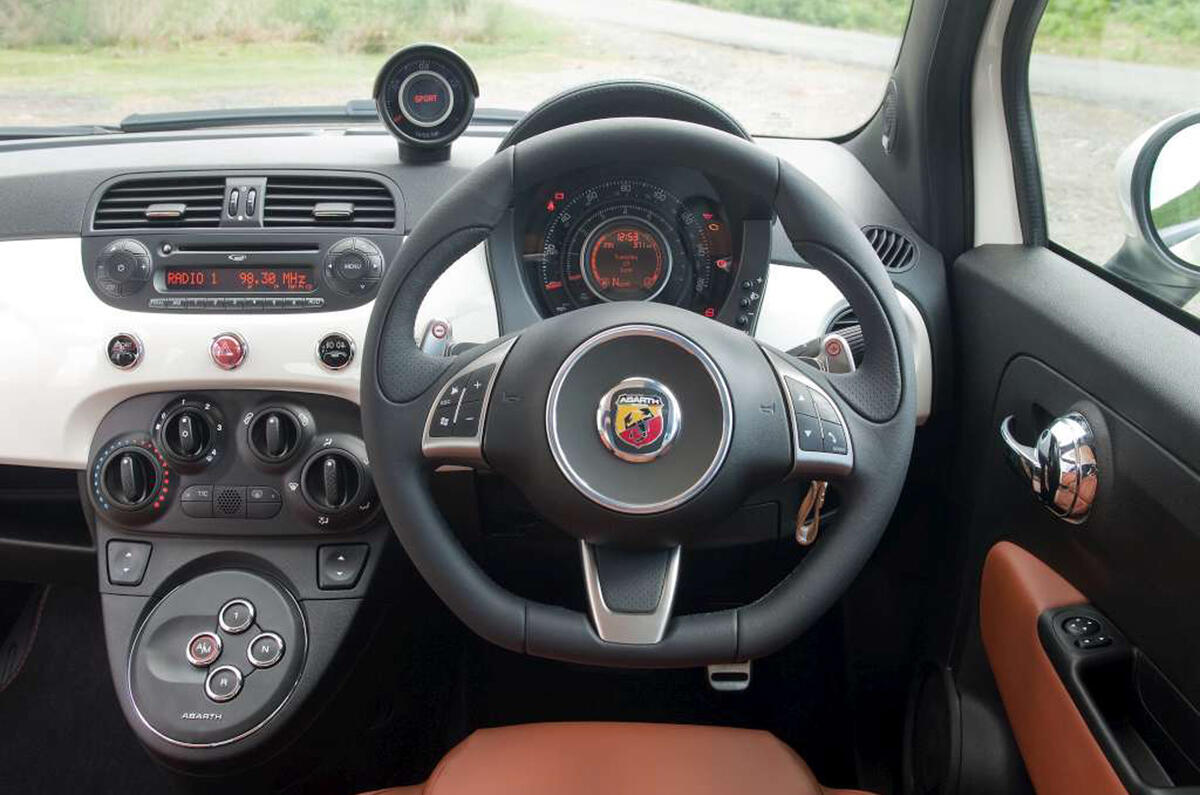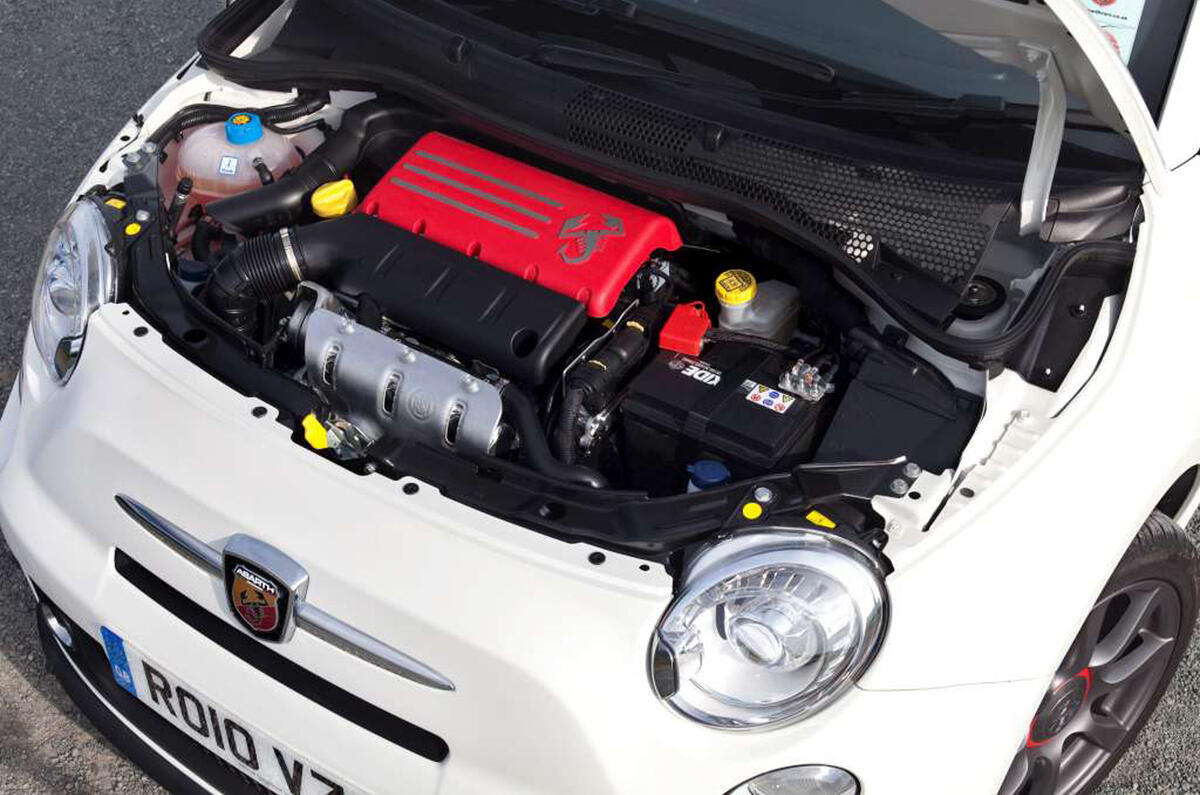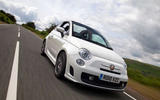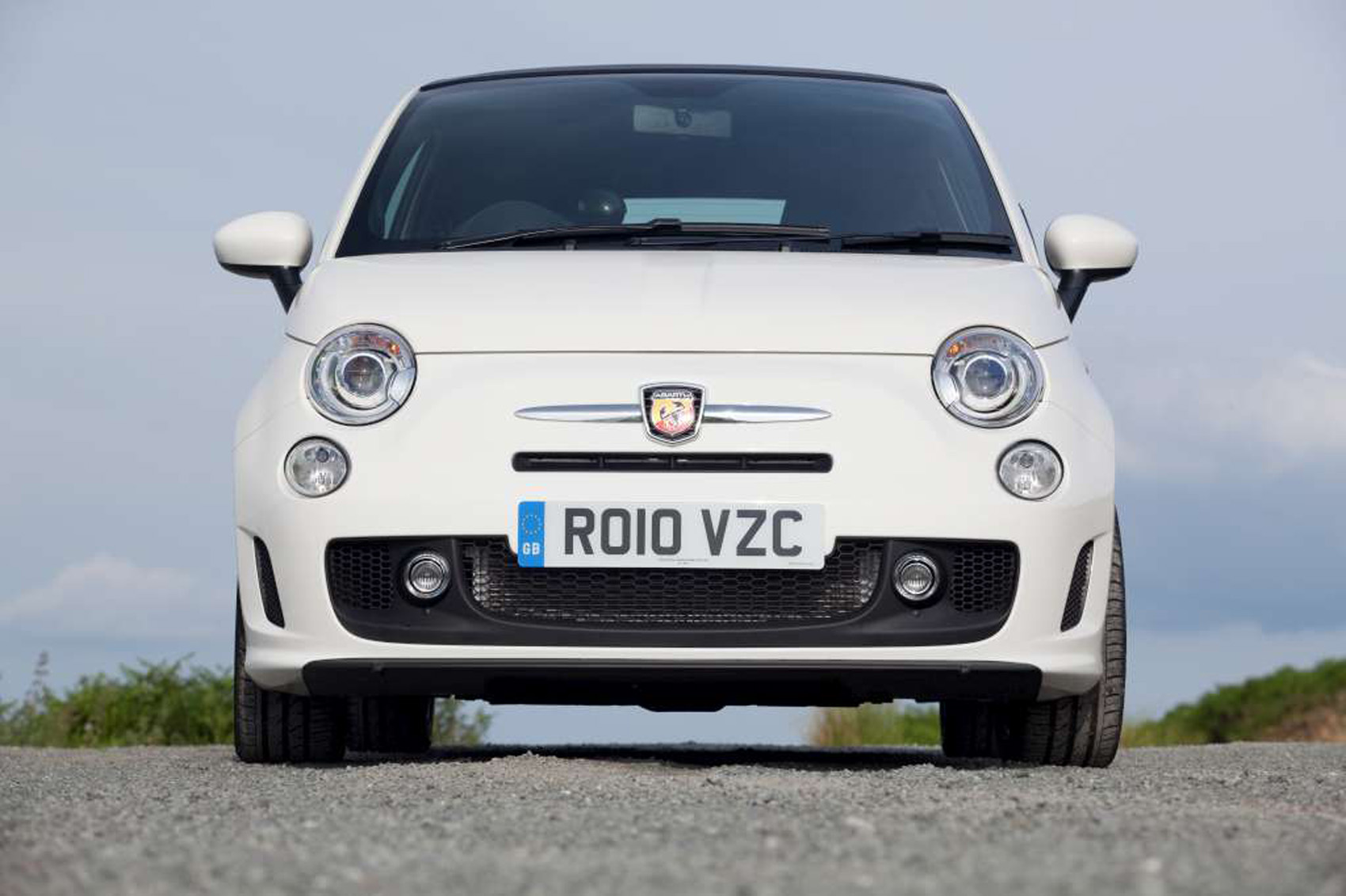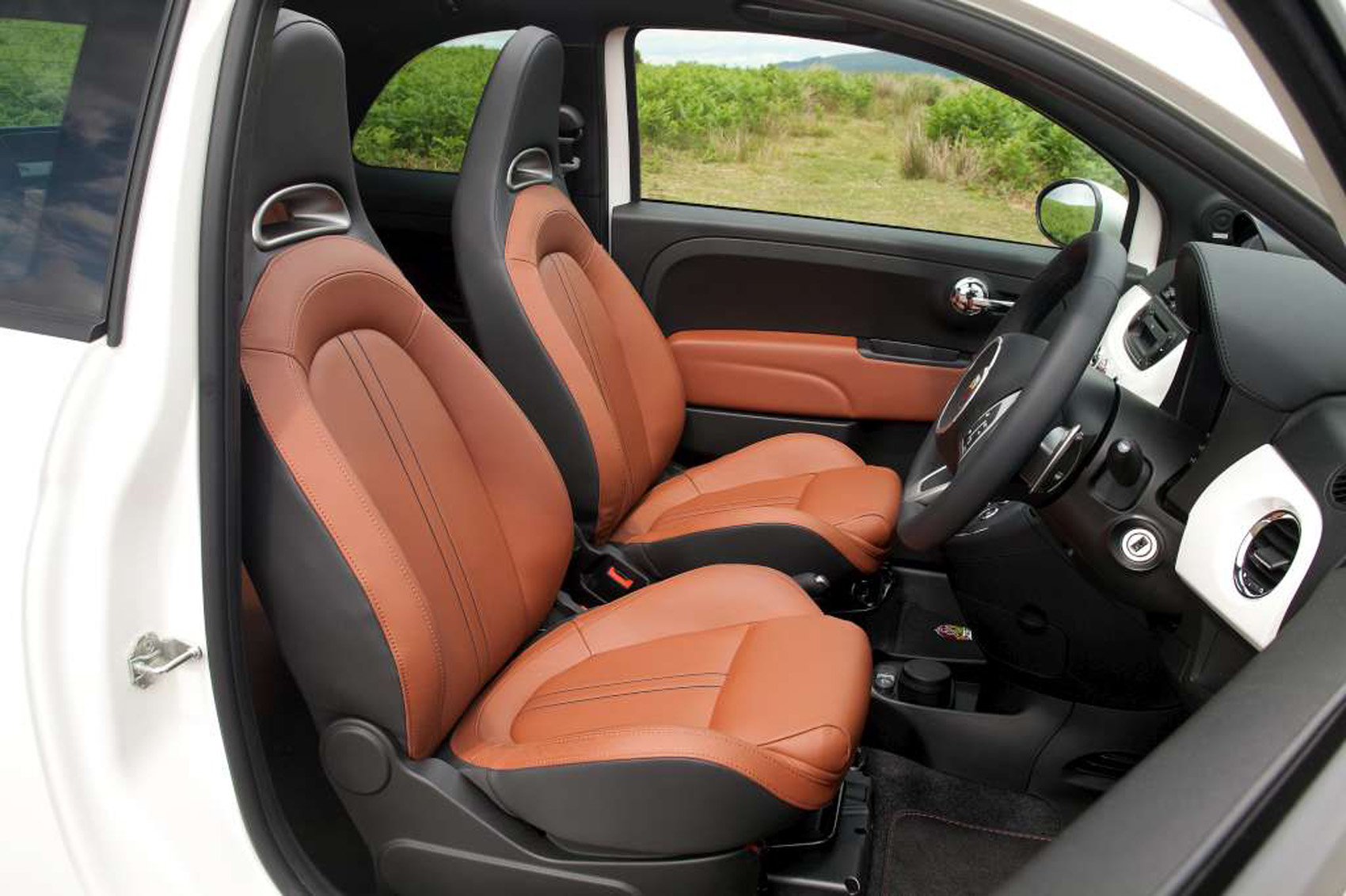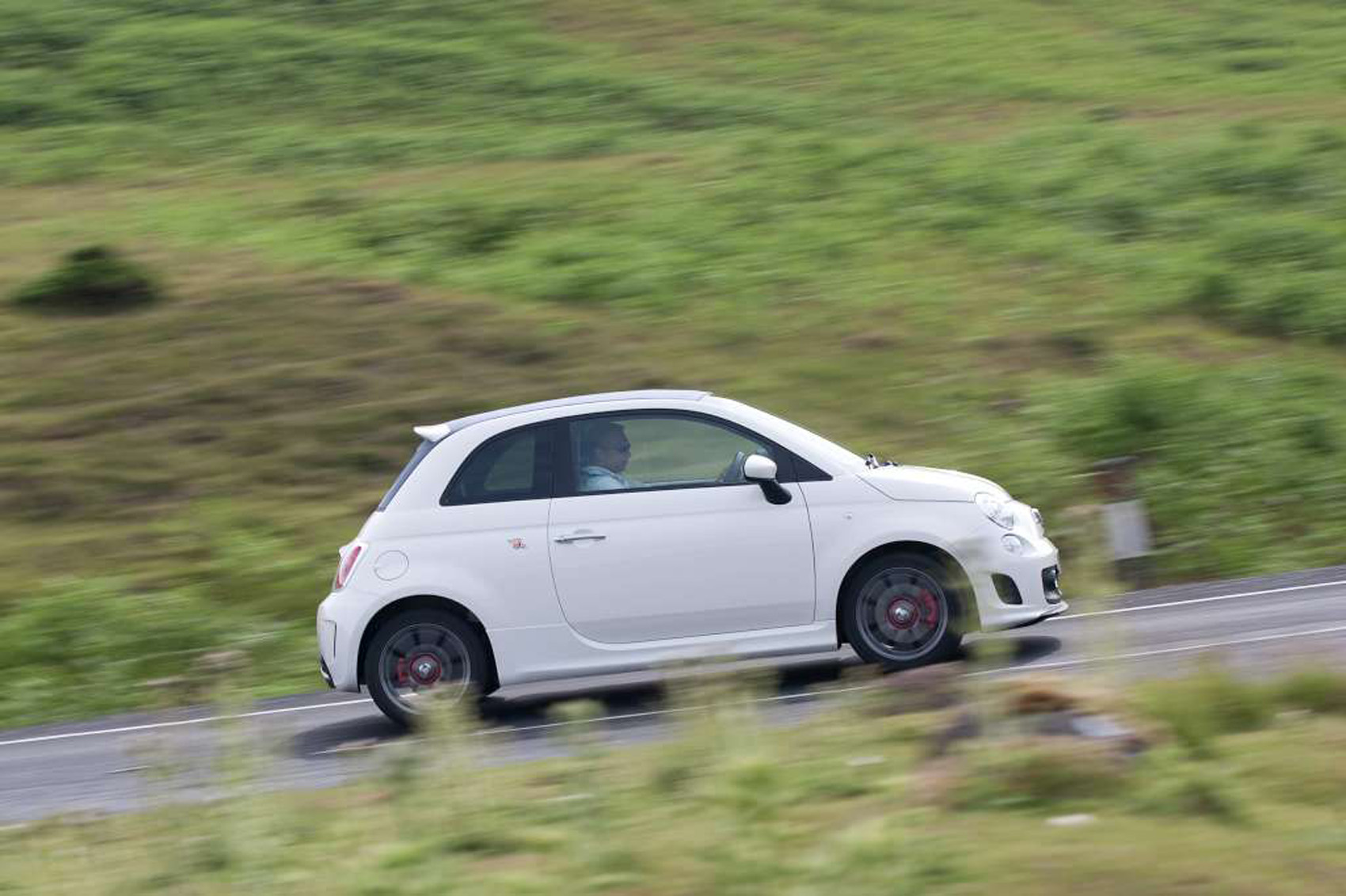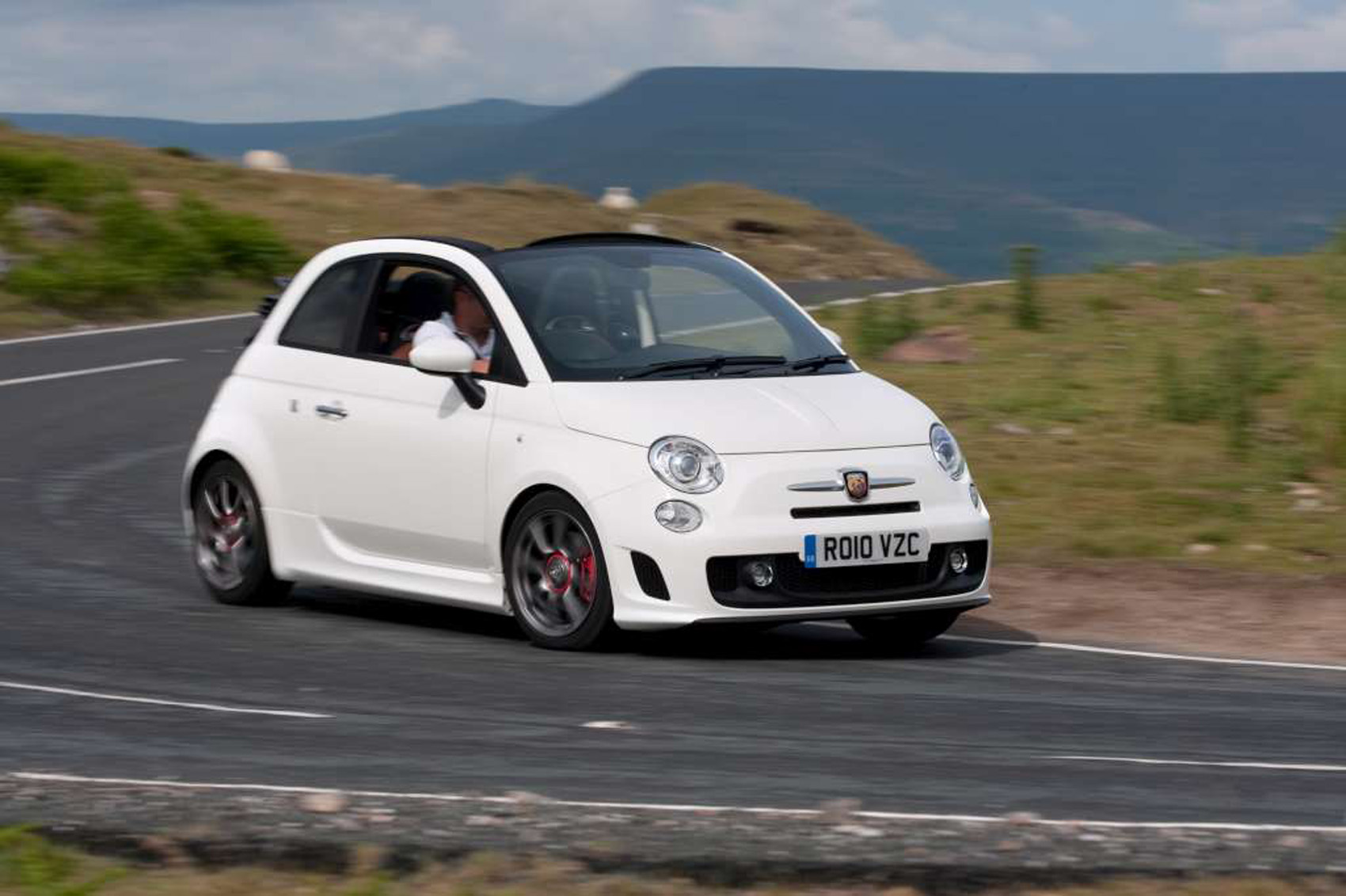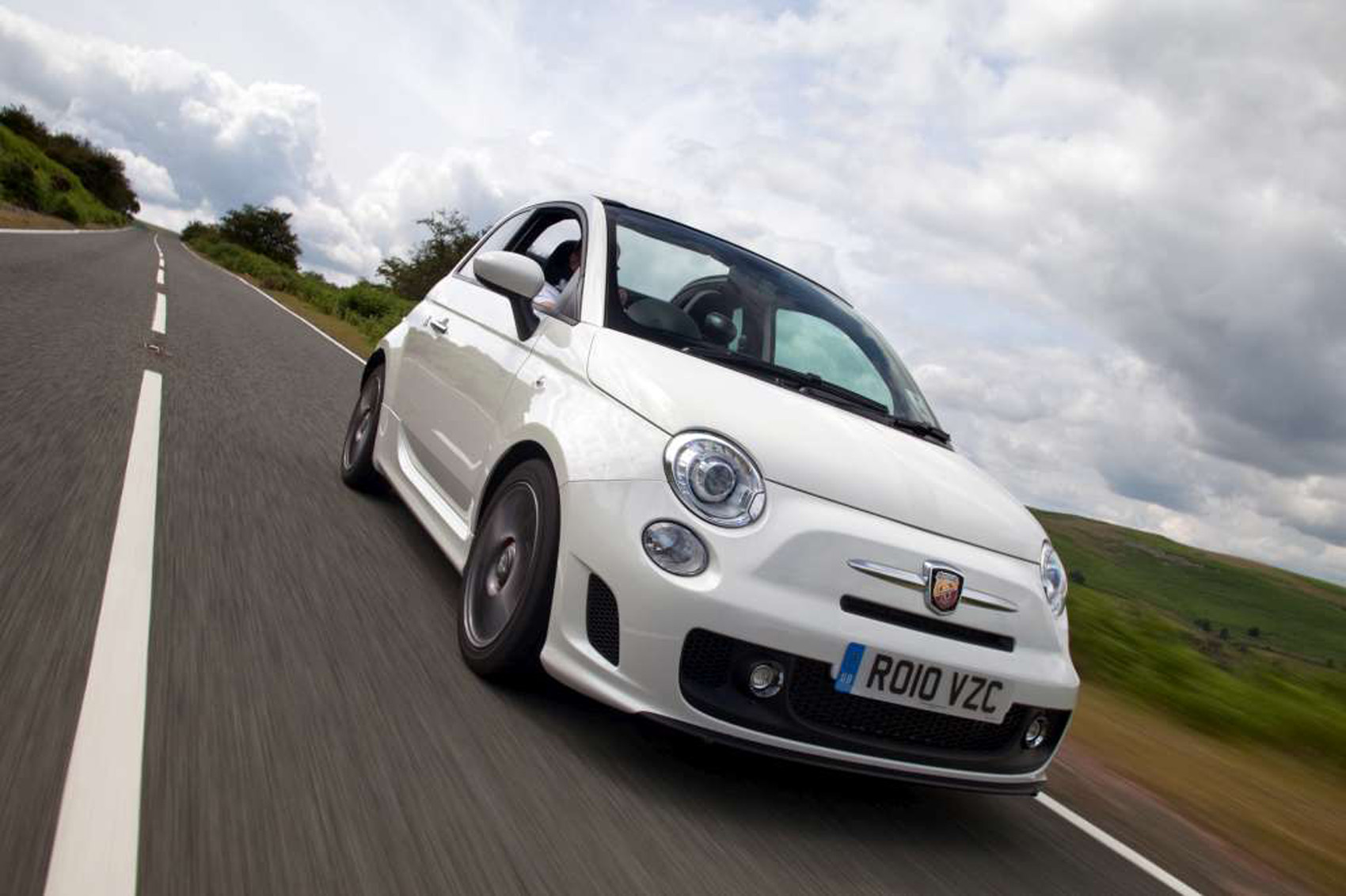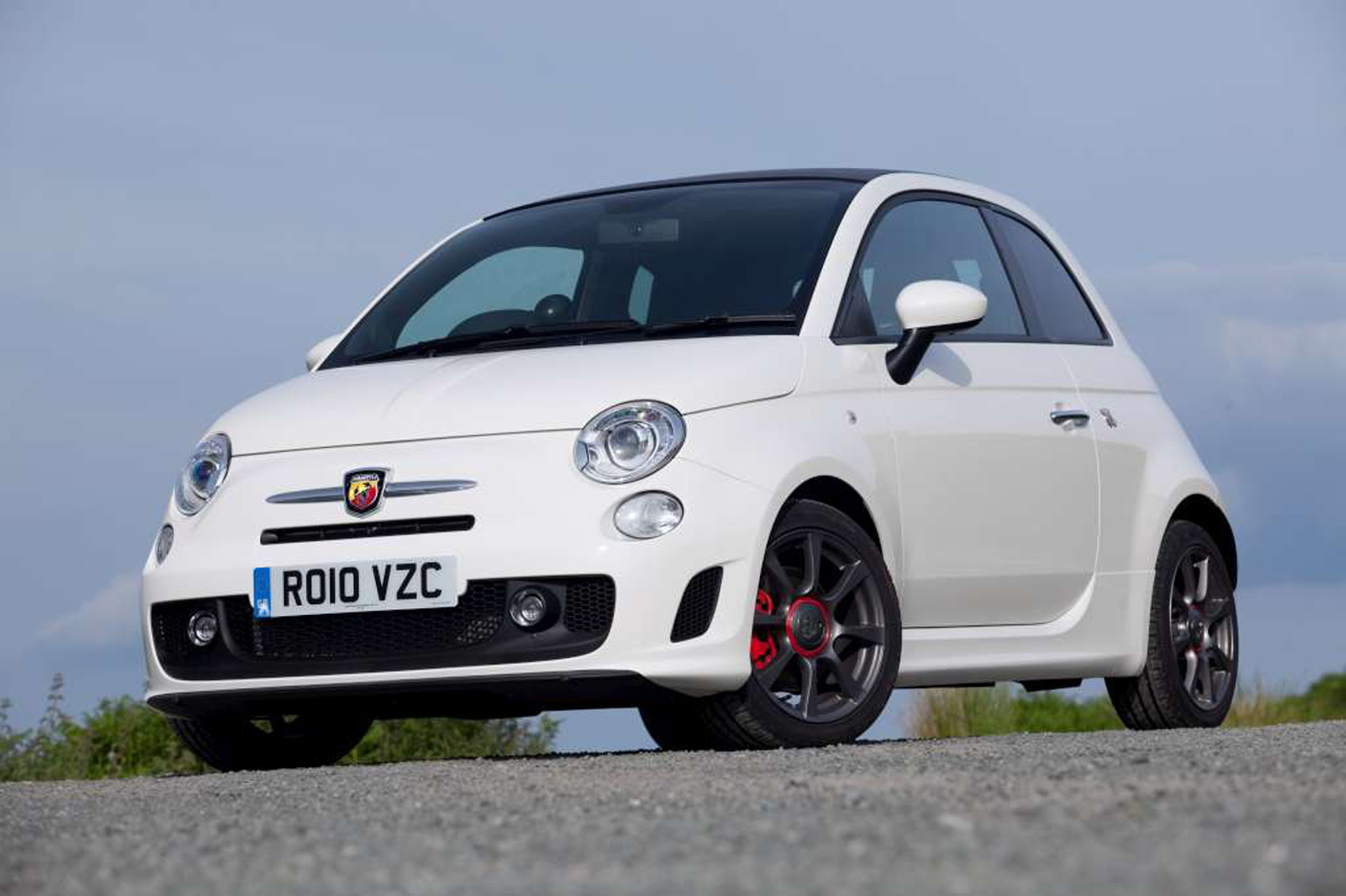Evidently Fiat wants you to be in no doubt that you're inside an Abarth 595 rather than a regular Fiat. The general cabin layout is Fiat 500, of course, because the cash pot isn't so big that a major redesign is possible, but in the detailing - and lots of it - it's pure Abarth. At least, what Fiat perceives modern Abarth to be.
So the major rubberised elements of the dash are black, as is the headlining unique to the Abarth 595, leaving the body-coloured splash across the centre console as the only splashed highlight. In the white of our test car, it feels just right. In red it can look a tad overbearing.
The driving environment has been given the sporty treatment, too. The bucket seats are meant to resemble Abarth's '60's items and they prove pleasingly supportive and feature plenty of adjustment.
There's a rotary dial for the backrest, but it's rather too easy to confuse the seat base's lever with the adjacent handbrake. They won't go low enough for some, and the seat base is a little short, too, but that's not uncommon on a car as small as the 500.
Pedals are, naturally enough, alloy (though 'racing pedals', as advertised, is stretching it a bit) and the steering wheel has the now-obligatory flat spot at the bottom.
Fortunately, not too much of it is flattened, so it's almost as functional as a typical round wheel, while its sculpted hand grips feel good, as does the leather-finished gearlever.
Other Abarth treatments include a turbo boost gauge and shift light, and a Sport button on the dash - which does the opposite to Fiat's usual 'city' button. Instead of lightening the steering feel, it adds a bit of weight: it also changes the shift light from an eco-mode to a performance mode.
The rest of the interior is generic 500: adequate space for those in the front, small rear seats and a small boot.
As for interior equipment, the standard Abarth 595 gets front foglights, air conditioning, a leather trimmed steering wheel, electric front windows and a 5.0in touchscreen infotainment system complete with Bluetooth, USB connectivity and DAB radio. Upgrade to the 595 Turismo and you get automatically dimming rear-view mirrors, dual-zone climate control, rear parking sensors, and electrically adjustable door mirrors.
The range-topping 595 Competizione models get xenon headlights, an Abarth Record Monza exhaust system, Koni shocks on the front and carbonfibre interior touches. The 695 Biposto is a different beast and is a more stripped out aggressive version, with lots of carbonfibre and Alcantara dotted around and none of the luxuries you take for granted in a standard Fiat 500.




